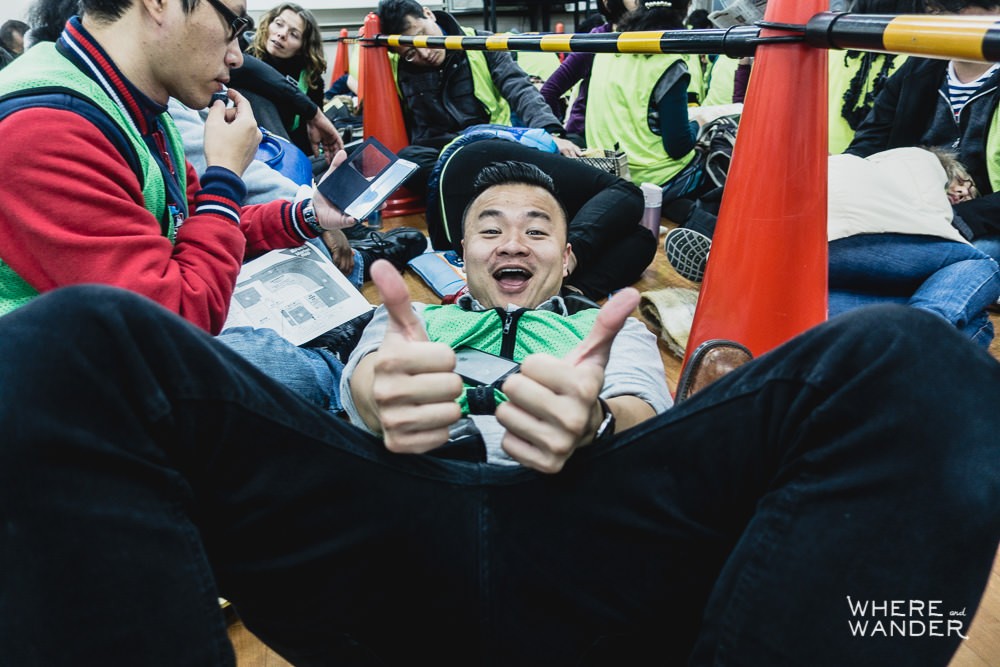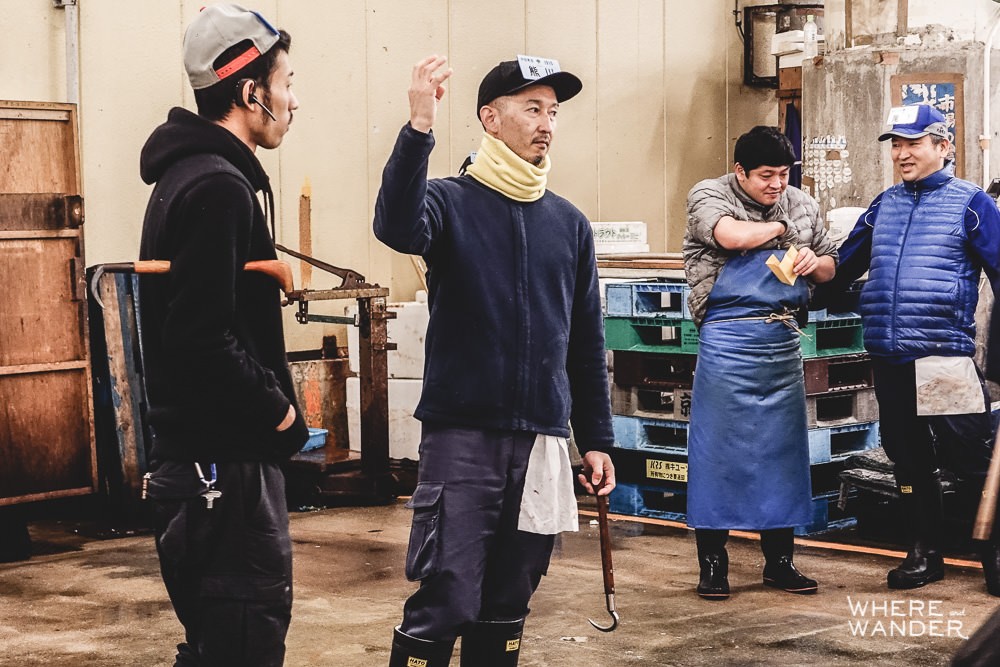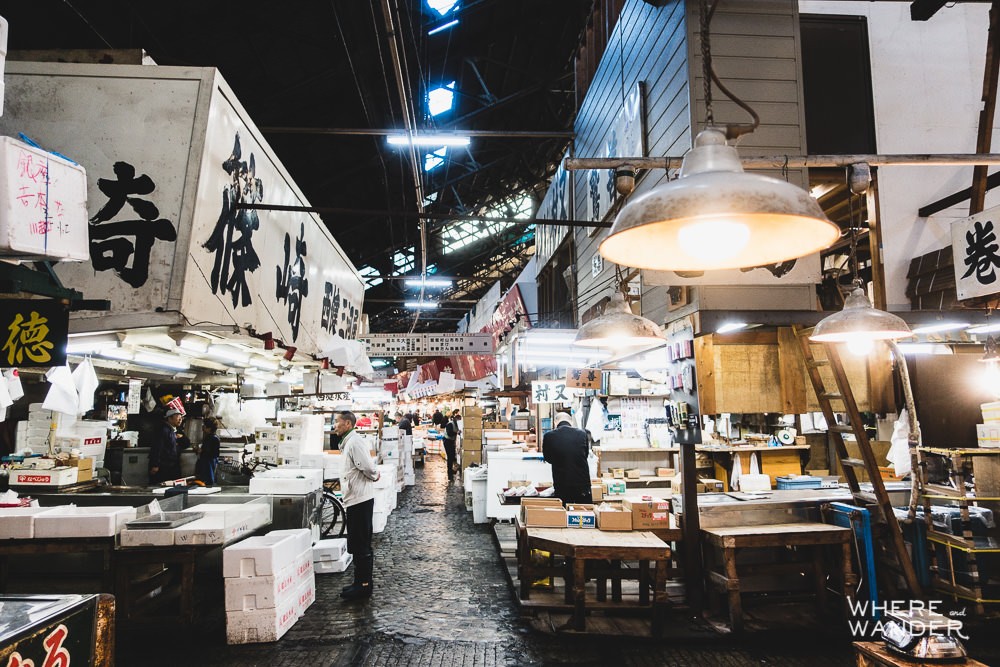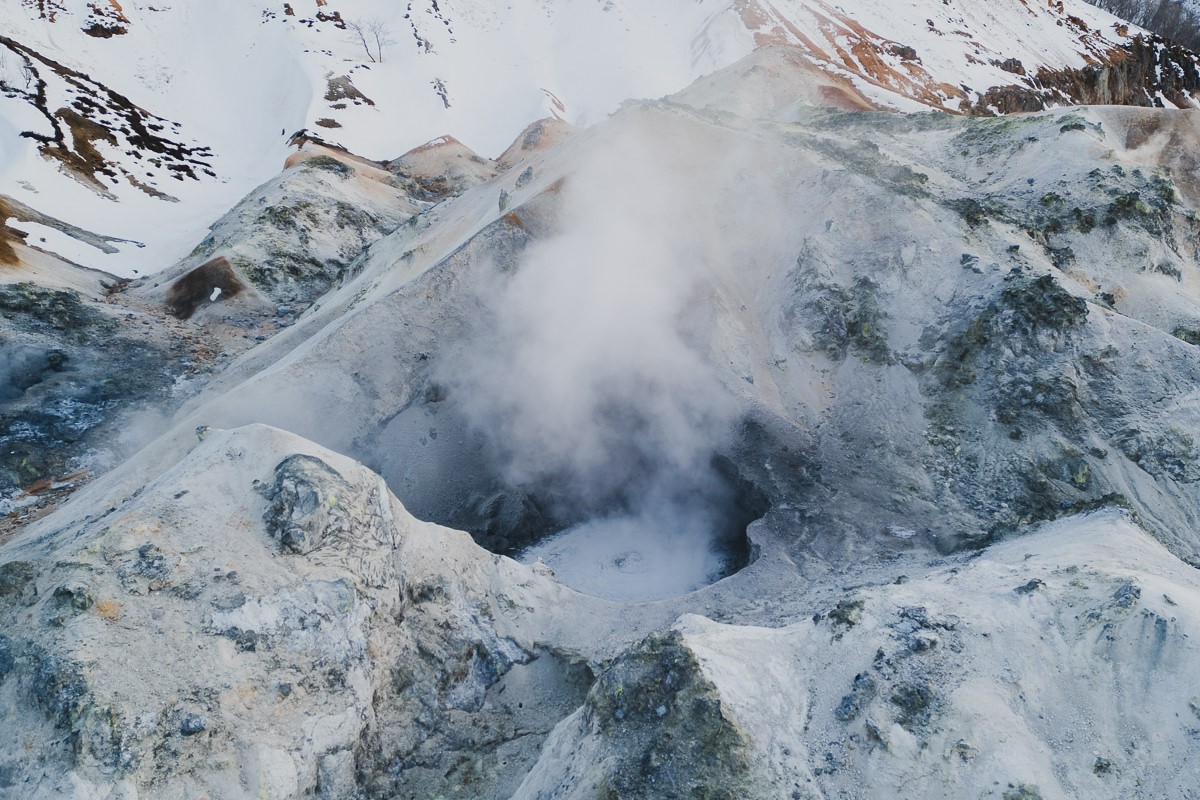My Last Visit To The Old Tsukiji Market Tuna Auction Before It Closed
My Last Visit To The Old Tsukiji Market Tuna Auction Before It Closed
The story below was from my last visit to the tuna auction before it closed in 2018. Today, the restaurants and stalls of the outer Tsukiji fish markets are still open. It’s a bit touristy and overpriced, but it’s still an experience not to be missed. If you were wondering how this compares with the new Toyota Fish Auction, read on.
UPDATE: The tuna auction now takes place at the new and modern Toyosu market. You can read my guide to visiting the Toyosu market and securing your free tickets to the tuna auction.
TIP#1: For activities, use Klook. Use this link to sign up and you can get $5 off your first booking. You can also try this code: WELCOMEUS for 8% off (minimum $65) if you’re based in the US. The prices on here are usually the same if not cheaper than paying direct, plus there are always some kind of promo codes that you can use to get a lower price. Even for things like the popular Shinkansen high speed train from Tokyo to Osaka.
TIP #2: For accommodations, if you can book months in advance or need to book for 4 or more people, use Airbnb to see if there are some cheap apartments or rooms available. Otherwise, I primarily use Agoda and Booking for hotels and hostels. Agoda usually just edges out Booking in Asia. But I always check both because the prices aren’t always the same.
How To Visit The Tsukiji Fish Market Auction – According To Me
As far as I’m concerned, no matter your reason for coming to Tokyo, be it the food, the robot restaurant, the micropig petting cafes, or DisneySea, you simply cannot skip the Tsukiji fish market experience of watching tuna being auctioned off at 5 am and then having some fresh sushi right after at one of the adjoining restaurants. This is not an experience that you can just do unplanned. There is a right way to do it and it begins the day before.
Sleep Early Or Don’t Sleep At All
Like anything worth experiencing, my friend and I wanted to be well prepared and have our wits about us. I’m talking about a solid 2-3 hour nap. The market opens early, but we would need to be there even earlier to secure a spot in the queue. We went the route of spending the whole evening at an onsen spa and passed the time pampering ourselves.
Update: If you’re planning to do something similar with the Toyosu Market Fish Auction, I recommend spending the evening before and early morning hours at the new Manyo Club Onsen that’s located right in the same area. It’s cheaper than taking a taxi in the middle of the night.

A Post-Spa Meal For The Long Walk
The night or morning officially started at 2 am in Roppongi where we stopped by a 24 hour Sushi Zanmai. If you were wondering why we’d be eating sushi just a few hours before eating sushi, let me explain my logic. What better way to truly appreciate the freshest sushi at the Tsukiji market than by sampling some above-average sushi just before that.
We chose Shibuya as our starting point because it was only about about 4 km away from the Tsukiji Market. This was a walkable distance with plenty of time to digest while also avoiding the excessive taxi fare at night. The trains stop running around midnight.
Finding The Osakana Fukyu Center By 3 AM
Our walk brought us to the Google Maps location for the Tsukiji Fish Market. When we got there, nothing looked open and we had no idea where to go. Luckily, a stranger pointed us to the right building. I later learned that it’s called the Osakana Fukyu Center.
The market allows 120 visitors a day to watch the fish auction. The first group of 60 goes in from 5:25 to 5:50 am and the second 60 goes in from 5:50 to 6:15 am. We arrived just before 3:30 and there was already a room full of eager tourists, some more alert and awake than others. Our reward was one of these snazzy vests.
At this point, we found a spot on the ground and made ourselves comfortable. I brought gummy bears and a can of hot coffee somewhere along the way. It was now luke-warm.
The Fish Auction
I got my second wind just in time for the auction, which helped with dodging the trucks and speeding forklifts as we walked through this bustling and already running market. This was why they handed out the reflective vests.
Inside, we caught our first glimpse of the exclusive group of buyers, walking around and inspecting the tuna ahead of the auction. They each carried a small pick ax to chip at the end of the tuna for a quick taste.
The whole scene was a bit underwhelming, until one of the guys got up on a platform and started hollering out an unintelligible slew of Japanese. The place went quiet, but there was a new energy in the air. In between breaths, the buyers from earlier, now scattered about, took turns casually raising a finger to indicate that they making a bid. And like that, the auction had already begun.
There was a new auctioneer for each tuna and they all had their own style of calling out the bid prices. Cadence, pitch and tone. What I found fascinating was the nonchalant manner that the buyers were expressing interest in the tuna. You’d think they were buying a bag of crisps, and not a giant fish that costs upwards of $20,000.
The area was like a giant refrigerator, which made sense so I was glad for my down jacket. There was plenty of opportunity to take photos, but we weren’t able to move from our designated area to avoid interfering with market operations. Over 25 minutes, we caught two sets of auctions.
Sushi For Breakfast
We didn’t waste any time wandering about aimlessly after returning the reflective vest. The plan to move on to the next phase of the adventure was underway – securing a spot in line for one of the sushi restaurants. While we were watching the auction, others had already started queuing.
We knew ahead of times that Sushi Dai was the most popular spot, so we’d consider it only if the line was short enough. For better or worse, we couldn’t find it because everything was written in Japanese. Our backup plan was always to find something with a more reasonable queue and price.
The small restaurant we ended up at turned out to be one of the highlights of the morning. We took stools at the long table right in front of the chef and watched as he exoertly prepared the freshest sushi I’ve ever had. The chef was a jolly old man that was genuinely surprised and happy at how much we ordered.
While Sushi-Dai was the place to be, I’ve heard of people waiting 2-5 hours in line, and the set menu costs around 4000 yens (which was about $36). The prices at our place ran between 700-2000 yen ($6-$18), but the amount of food we got was incredibly generous. We ended up ordering enough food for 4 people and our total bill for 2 people came out to somewhere around 5000 yen ($45).
The quality and preparation was flawless and every piece simply melted in my mouth. I’ve eaten at amazing sushi restaurants around the world and ultimately, it comes down to how fresh can you get the fish from ocean to table.
One difference here is Japan is the importance of the buyers. Years of experience have honed their judgment, instincts and taste buds to know which tuna or salmon, or batch of sea urchin will taste the best.
Eye On The Prize
The market itself didn’t open to the public until 9 am and we were done with breakfast well before then. At this point, our options were to wander around the outside markets or try to sneak into the wholesale market.
We started with the first option and found a bunch of overpriced sushi knives, overpriced tea, and overpriced souvenirs. It’s overpriced because they know tourists love this stuff.
After about 15 minutes, my friend and I decided to take our chance with the wholesale market. The plan was to walk in confidently, so we straightened up, looked serious and entered.
And immediately, we were turned away.
I used every single Japanese word I knew for all the different types of fish out there. The guard was not impressed, so I tried to mime a sea urchin. Undeterred, we walked to a different entrance and this time we were successful.
Finding My Uni
Inside, I found a stall with the most beautiful trays of sea urchin (uni), the one thing I was looking to buy. When I asked how much, the guy just shook his head and said “No.” It was not hard to see that I wasn’t a buyer, so I didn’t hold it against him.
Emboldened by our luck with getting in, we walked around until I found a different stall with these more trays of this goodness. This guy saw the look of desperation in my eyes and indicated that I could buy it. I might have cried if I weren’t trying to act so professional. When he wrapped it up and handed it to me, I bowed and muttered the little Japanese I learned from an anime for thank you. He looked confused and I walked away, giggling inside like a schoolgirl at the thought of all that fresh uni in my hands.

We continued around the market for another hour, just watching the fish mongers do their thing. This fish market was unlike any I’d experienced around the world. Knowing this massive operation will close and permanently move to a new location made it a very special experience.
Enjoying Our Spoils
Having safely transported the uni and a couple of onigiri rice ball back to the apartment, I prepared for a second breakfast. Sitting cross-legged on my tatami mat, I curled up with a blanket and gently placed one piece after another of uni atop my rice balls. I savored every bite as thoroughly as I could and repeated until the tray was empty. It was the most memorable meal I’d eaten in Japan on this trip.
Updated on May 28, 2024
































[…] you haven’t read my guide on “How To Do The Tsukiji Fish Market Right,” read that first and come back here. These are some of my photographs from the morning I […]